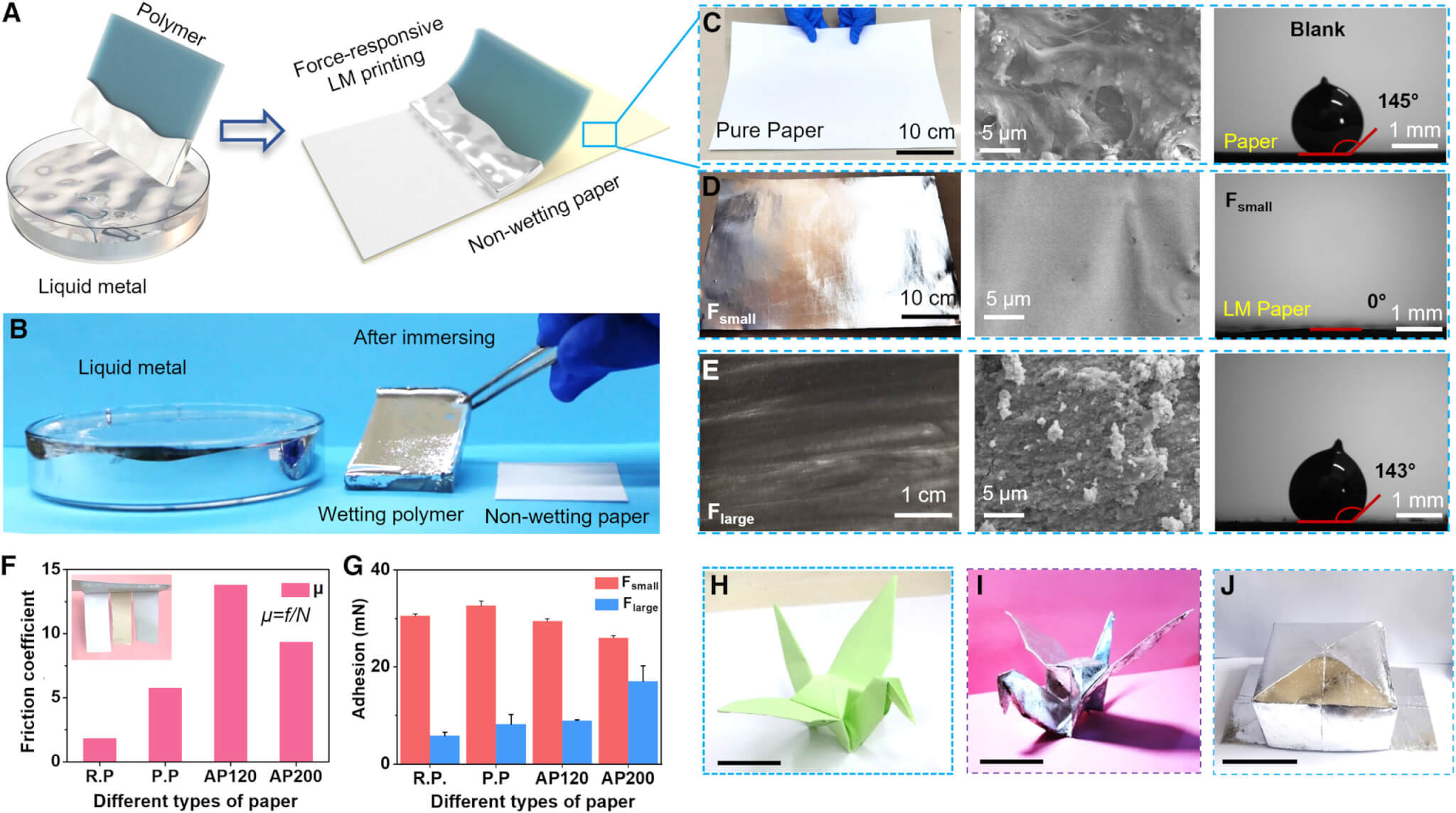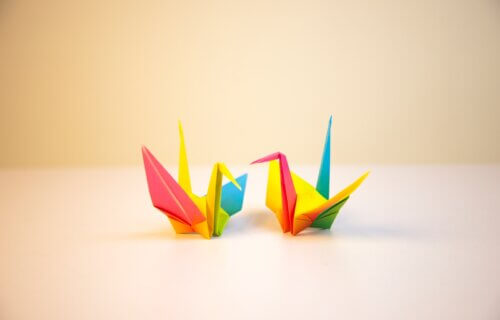BEIJING, China — Paper and plastic could potentially be transformed into “smart” devices thanks to the development of a liquid metal that adheres to surfaces. Scientists assert that this technology could be utilized to make wearable electronics, soft robotics, and flexible gadgets, including stretchable smartphones.
“Before, we thought that it was impossible for liquid metal to adhere to non-wetting surfaces so easily, but here it can adhere to various surfaces only by adjusting the pressure, which is very interesting,” says Dr. Bo Yuan, the study’s lead author from Tsinghua University in China, in a media release.
The team showcased a technique that facilitates the application of this substance to surfaces typically resistant to bonding. The approach is intended to be scalable for mass production. Past efforts have been stymied by liquid metal’s extremely high tension, which prevents it from adhering to most materials, including paper. An attempted solution involved a strategy called “transfer printing,” which uses a third material. However, this approach complicated the process and weakened the final product’s electrical, thermal, or mechanical performance.
The researchers developed an alternative method using a mixture of liquid metals called eGaln and BilnSn. These were applied to silicone stamps that were then pressed onto paper surfaces.

(credit: Bo Yuan et al.)
“At first, it was hard to realize stable adhesion of the liquid metal coating on the substrate. However, after a lot of trial and error, we finally had the right parameters to achieve stable, repeatable adhesion,” adds Dr. Yuan.
Rubbing the stamp against the paper with slight force enabled the metal droplets to effectively bind to the surface, while greater force hindered the droplets from adhering. To demonstrate the process, they created an origami-style paper crane, showing that the treated surface can still be folded as usual, maintaining its original properties.
The researchers described these results as “promising.” They are currently figuring out how to ensure the liquid metal coating remains in place once applied. Currently, packaging material can be added to the paper’s surface, but the team aims to find a solution that doesn’t require this additional step.
“Just like wet ink on paper can be wiped off by hand, the liquid metal coating without packaging here also can be wiped off by the object it touches as it is applied,” explains Dr. Yuan.
In the future, the researchers plan to apply liquid metal to a wider variety of surfaces, including metal and ceramics.
“We also plan to construct smart devices using materials treated by this method,” Yuan adds.
Bendable displays are an emerging technology, spanning from foldable smartphones to flexible TVs and curved public information displays. These latest findings could potentially elevate this technology to the next level.
The research is published in the journal Cell Reports Physical Science.
South West News Service Mark Waghorn contributed to this report.

